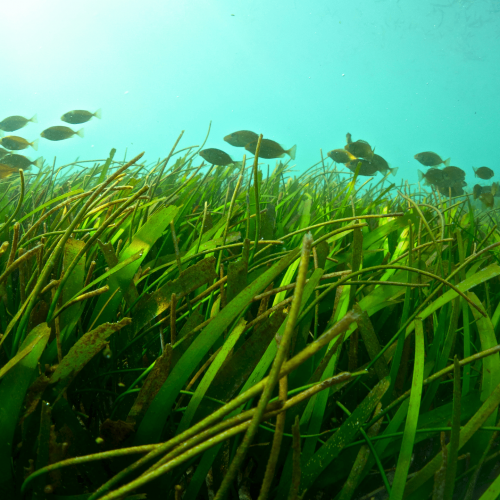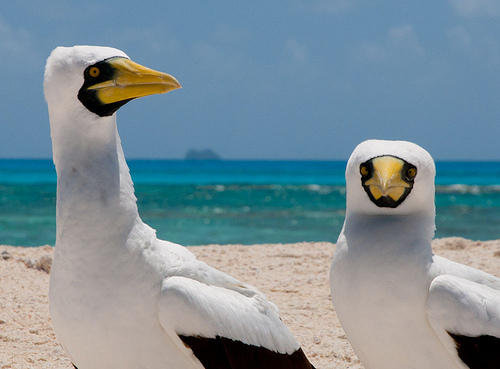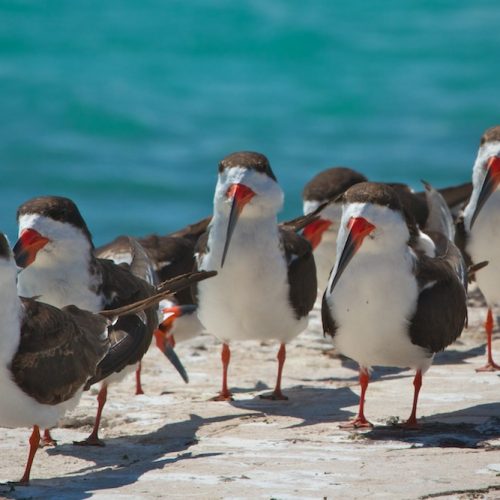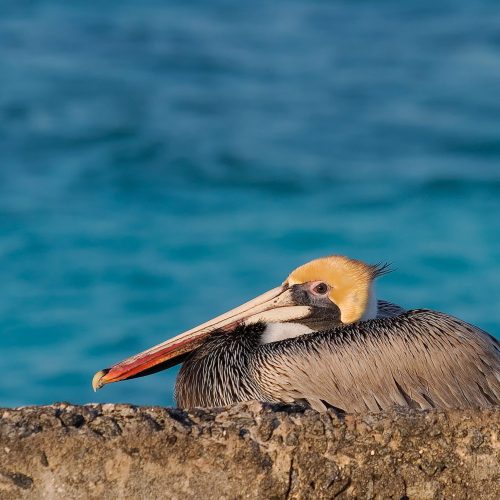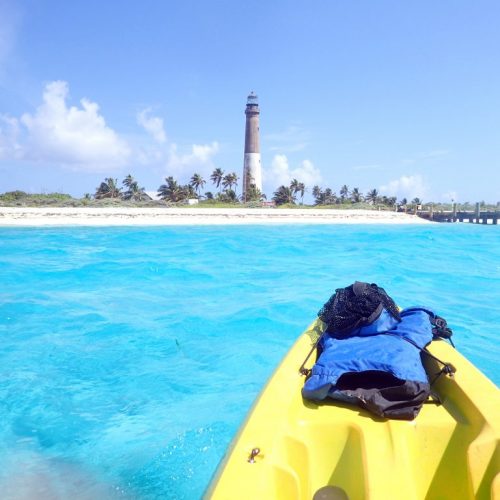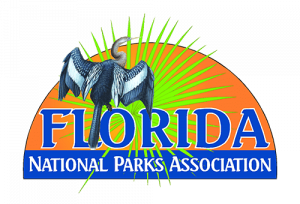Welcome
Dry Tortugas National Park
Almost 70 miles (113 km) west of Key West lies a cluster of seven islands, composed of coral reefs and sand, called the Dry Tortugas. Along with the surrounding shoals and waters, they make up Dry Tortugas National Park.
Accessible only by private boat, commercial ferry, or seaplane, the park is known the world over as the home of magnificent Fort Jefferson, picturesque blue waters, superlative coral reefs and marine life, and the vast assortment of bird life that frequents the area.
Boating
Bring your own boat to Dry Tortugas National Park and get the most out of the opportunities to explore this remarkable national treasure.
Camping
Camping at Garden Key is an incredible experience. Amazing star gazing, snorkeling, sunsets and more!
Snorkeling & Diving
Dry Tortugas National Park is home to history and natural wonders above and below the water’s’ surface.
Enjoy the Silence
The symphony of sounds heard in national parks is treated as a natural resource that is accorded the same level of protection as any other resource.
Plan Your Visit to Dry Tortugas National Park
Garden Key is the second largest island in the Dry Tortugas, about 14 acres in size, and has had the most human impact. Located on Garden Key is historic Fort Jefferson, one of the nation’s most extensive and ambitious 19th-century forts and a central cultural feature of Dry Tortugas National Park.
Garden Key is also home to our park headquarters, visitor center, campgrounds and great swimming and snorkeling areas.
Ferry and seaplane passengers travel directly from Key West to Garden Key. Entrance fees are included in ticket price.
Passengers traveling here by personal vessel must stop by Garden Key to pay the entrance fee and file a free boat permit.
- Access
- Accessibility
- Fees & Passes
- Fort Jefferson
- Getting Around
- Permits & Reservations
- Pets
- Safety
- Visitor Centers
- Weather
The park is open 24 hours a day year round, however some islands are closed to the public.
- Garden Key is open year round 24 hours a day
- Ft. Jefferson, on Garden Key, is open year-round from sunrise to sunset
- Loggerhead Key is open to a limited number of day visitors year round from sunrise to sunset
- Bush Key is seasonally closed during the sooty tern nesting season. It is usually open from mid-October to mid-January
- East Key, Middle Key, Hospital Key and Long Key are always closed year round for the protection of sensitive ecological features and nesting bird habitat Florida Keys Eco-Discovery Center is open Tuesday to Saturday from 9 am until 4 pm
- Garden Key Visitor Center is open everyday from 8:30 am – 4:30 pm
Public Transportation by Ferry or Seaplane
Public transportation departs to the park from Key West and bring you to Garden Key.
For ferry schedules, prices, and reservations, contact: Yankee Freedom II: phone 800-634-0939 or 305-294-7009 or www.drytortugas.com.
Pets (except certified service dogs), flammable accelerants, compressed gas canisters and firearms of any type are NOT allowed on the ferry.
For seaplane schedules, prices, and reservations contact Key West Seaplane Adventures, phone 305-293-9300.
Charter
Fishing and dive charters can be arranged in the Florida Keys and Naples. For a list of services, contact the park at 305-242-7700 or view a list of charters here.
Private Boat
Private pleasure boats are welcome, but must be entirely self-sufficient and must acquire a permit through the Park Rangers at Garden Key. U.S. Coast Guard and Geodetic Survey Chart #11438 is necessary for navigation to the Dry Tortugas.
There are Visitor boat slips available for short-term use to load and unload or tour the fort at Garden Key. These docks are not available for overnight – boats must anchor in the harbor overnight. There are no public docks at loggerhead.
Private Seaplane
Private seaplanes that are not for hire are welcome at the Dry Tortugas. Because of sensitive resource issues, any individual or group wishing to fly a private seaplane to the park must have a Special Use Permit issued through Everglades National Park.
There are no facilities at the Dry Tortugas National Park so all seaplanes must have enough fuel and supplies for a round-trip flight. Information on how to acquire a permit may be found here.
There is no fuel, water, charcoal, or food service available in the park.
The Dry Tortugas National Park has charters like the Yankee Freedom which has lifts at the dock to help people onto the boat in Key West. Visitors need to give advance notice to get it setup for passengers in need of accessibility. There is a ramp at the Fort Jefferson dock in which power chair/wheelchair can disembark from the boat.
The 19th century brick fort has three floors and wheelchairs are not able to get to the second and third tier. The fort is accessible only on the first tier on the grass surface or the brick walkway as well as the trail on the outside of the fort.
Current pricing for entry fees and passes can be found on the NPS website
Click here to learn more about the fees associated with camping at Garden Key
Fort Jefferson was built to protect one of the most strategic deepwater anchorages in North America. By fortifying this spacious harbor, the United States maintained a critical “advance post” for ships patrolling the Gulf of Mexico and the Straits of Florida. Nestled within the islands and shoals that make up the Dry Tortugas, the harbor offered ships the chance to resupply, refit, or seek refuge from storms.
The location of the Tortugas along one the world’s busiest shipping lanes was its most significant military asset. Though passing ships could easily avoid the largest of Fort Jefferson’s guns, they could not avoid the warships that used its harbor.
In enemy hands, the Tortugas would have threatened the heavy ship traffic that passed between the Gulf Coast (including New Orleans, Mobile, and Pensacola) and the eastern seaboard of the United States. It could also serve as a potential staging area, or “springboard” for enemy forces. From here they could launch an attack virtually anywhere along the Gulf Coast.
A powerful deterrent
Poised to protect this valuable harbor was one of the largest forts ever built. Nearly thirty years in the making (1846-1875), Fort Jefferson was never finished nor fully armed. It was a vital link in a chain of coastal forts that stretched from Maine to California. Fort Jefferson, the most sophisticated of these, was a brilliant and undeniable symbol that the United States wanted to be left alone. Though never attacked, the fort fulfilled its intended role. It helped to protect the peace and prosperity of a young nation.
During the Civil War, Union warships used the harbor in their campaign to blockade Southern shipping. The fort was also used as a prison, mainly for Union deserters. Its most famous prisoner was Dr. Samuel Mudd, the physician who set the broken leg of John Wilkes Booth.
Abandoned by the Army in 1874, the fort was later used as a coaling station for warships. In 1898, the USS Maine sailed into history, departing the Tortugas on its fateful mission to Havana, Cuba. Though used briefly during both world wars, the fort’s final chapter as “Guardian of the Gulf” had long since closed.
Click here to learn more about the preservation work that has been completed on Fort Jefferson.
The ferry and seaplane drop off visitors at Garden Key and do not provide transportation to other areas of the park. Due to time constraints, Ferry and seaplane day visitors will not have time to visit Loggerhead Key.
To visit other areas of the park you must have your own mode of transportation and file a free boat permit with the park when you arrive.
Bringing your own boat to the Dry Tortugas National Park will provide you with the most opportunities to explore this remarkable national treasure.
If you plan on camping consider bringing a kayak or canoe. This will provide you with access to other areas of the park such as Loggerhead Key and great snorkeling sites. If you plan to take the Yankee Freedom Ferry, all camping plans including bringing a kayak must be coordinated through the ferry.
There are no boat rental services of any kind available in the park.
Depending on how you plan to visit Dry Tortugas National Park you may be required to obtain a permit. The following links provide additional information about the required permits at the park.
Boat Permits are required for all private boaters recreating in the park. Obtain a free boat permit at Park Headquarters on Garden Key. This must be done before recreating within the park (i.e. fishing, snorkeling, diving etc.)
Special Use Permits are required for special events such as weddings, first-amendment activities, privately owned (not for hire) seaplanes, meetings, group activities of 20 or more and non-profit organization activities, require special use permits.
Filming Permits are required for all commercial filming within the Dry Tortugas National Park.
Camping Reservations
The National Park Service does not take camping reservations for individual campsites. Designated campsites are on a first come first served basis with an overflow area available if needed. We do not turn away any campers when they arrive at Garden Key.
Parties of 10 or more wishing to reserve the group campsite are required to coordinate in advance.
Ferry passengers wishing to camp at Dry Tortugas National Park must coordinate and book their camping through the Yankee Freedom Ferry. The Ferry has a limited number of campers they can carry daily, so book early.
The seaplane concessionaire will not transport camping gear.
Boat Permits and Mooring Buoys
Boat permits are now required for all vessels in the park, including within the RNA. The only vessels exempt from this rule are those transiting the area without interruption. Vessels may only anchor overnight on sandy bottom within one nautical mile of the Garden Key Harbor Light. Within the RNA, vessels may use one of seven recreational mooring buoys for day use only. See information below on how to obtain a permit and how to use a Dry Tortugas mooring buoy.
Why are Boat Permits Necessary?
Permits are necessary to provide increased protection to the visitor, the Research Natural Area (RNA), and other marine resources outside of the RNA.
They also allow park staff to provide reliable information to the public about appropriate RNA visitation, provide park managers with reliable information about public use, increase the safety of the boating public by providing increased staff contact, and assist in monitoring recreational mooring buoy use to evaluate carrying capacity.
Boating permits are required for all recreational vessels including kayaks, paddleboards, dinghies, vessels operating under a Commercial Use Authorization (CUA), and commercial fishing vessels.
Vessels greater than 50 meters are required to obtain a Special Use Authorization in addition to the boating permit. Please contact Dry Tortugas National Park for more information.
NOTE: A permit is not necessary for vessels merely transiting through the park.
How and Where to Obtain a Boat Permit
Boating Permits are free and can be obtained in person at the Garden Key Visitor Center or Dry Tortugas National Park Headquarters Office, both located within Fort Jefferson.
Visitors will receive information about park rules and regulations, as well as information about things to do at the park.
How to Properly and Safely Use Mooring Buoys
Approach slowly from downwind/current.
To secure your boat to the mooring, run your line from a cleat on your boat through the loop in the end of the mooring pick up line and back to a cleat on your boat.
Use sufficient scope (rope length) to minimize pull on the anchor. Rule of thumb, if the buoy is being pulled underwater increase the scope.
If there is an upward pull on the mooring, increase the scope.
Sailboats should not leave sails up when they are tied to a mooring.
You are responsible for your vessel, inspecting the buoy, and checking that the buoy is holding as intended. Report any problems to NPS staff.
It is recommended to leave someone on the vessel at all times.
The mooring is designed to hold up to a 100-foot recreational vessel. It is intended to be used when weather and sea conditions are appropriate for the intended recreational use such as diving or snorkeling. It is not intended for use in all weather and sea conditions nor as a long-term mooring.
Mooring Balls
The mooring is designed to hold up to a 100 foot recreational vessel. You are responsible for your vessel, inspecting the buoy, and checking that the buoy is holding as intended. Report any problems to NPS staff. It is intended to be used when weather and sea conditions are appropriate for the intended recreational use such as diving or snorkeling. It is not intended for use in all weather and sea conditions nor as a long term mooring.
LMBSE: N24° 37.833 W82° 55.187 Located on the east side of Loggerhead Key, use for access to the island’s beaches, swimming, snorkeling, and visiting the historic structures.
LMBSW: N24° 37.8031 W82° 55.546 Located on the west side of Loggerhead Key, use for access to the island’s beaches, swimming, snorkeling, and visiting the historic structures.
Scuba and Snorkel Locations
Avanti (Windjammer) Wreck: N24° 37.4162 W82° 56.574
Built in 1875, this three-masted 261.4-foot vessel sank in 1907. Portions of the ship at the surface with depths down to 21 feet. Please
refer to the Windjammer brochure for more information.
Offramp: N 24 40.156 W 82 54.506
Isolated reef outcroppings with staghorn coral on the western side. Depths 25 feet and shallower.
Scuba Sites
The Maze: N24° 36.532 W82° 56.969
Coral caverns, swim-through pinnacles and straight up vertical relief. Depth 20-60 feet.
Davis Rock: N24° 41.209 W82° 54.440
Large crevices run through the middle of this pinnacle reef. Depths from 20-45 feet.
Texas Rock: N24° 40.820 W82° 53.125
Plan on two dives to explore the entire reef. Large crevices, caves, swim-through, cracks, pinnacles and lots of vertical relief. Look for
the giant anchor. Depth 20-60 feet.
Additional dive and snorkel sites can be found around the park that do not have mooring balls. Please consult with a Ranger for more information.
For those of you who have pets that are part of the family and travel with you – you can bring them with you to Dry Tortugas National Park.
- Pets are permitted on Garden Key but not inside Fort Jefferson.
- Pets are not permitted on any other key in the park.
- Pets must be on a leash and under physical control at all times.
- Pets’ waste must be removed by owner from the park.
The Dry Tortugas National Park has much to offer. To reach this remote ocean wilderness one must travel by boat or plane over 68 miles of open sea. Visiting such an isolated place means that you need to be prepared, not only for rough seas, but for primitive conditions. There are no public phones, restrooms or snack bars.
Make sure you bring anything that you may need, such as protective clothing, sunscreen, or medication (especially for motion sickness). You will not be able to purchase these items in the park.
Snorkeling
A designated snorkel area is located near the campground. Snorkeling along the outside of the moat wall or around the pilings of the south coaling dock is recommended.
Before snorkeling, make sure that all equipment fits properly. There are no guards on duty, so swim at your own risk. No swimming or snorkeling is permitted inside the moat.
An approved dive flag must be displayed at all times when snorkeling outside of the designated snorkel area.
For your safety never snorkel alone – always use the “buddy system”
If you need to stand up, stand on the sand. Never stand on coral or seagrass, as standing can kill these valuable resources.
Shipwrecks and all historic artifacts are protected by law.
Do not disturb coral or shells. All coral, living and dead, is protected from collection.
Kayaking
Questions to ask yourself:
Have you left your trip plans with a fellow camper?
Do you have a VHF radio?
What is your plan for self rescue?
How will you call for help if you need it?
How will you identify your location if you are able to contact searchers?
How will you signal searchers?
Do you have an anchor or sufficient line to tie off to buoys or markers to minimize drift?
Is the weather forecast for winds less than 10 mph and calm seas for the duration of the open water kayak trip?
What are the tides and currents? Are they favorable for your planned trip?
Does everyone in your group have open water kayak experience?
Are the kayaks sit-on-top self bailing kayaks?
Are the kayaks brightly colored?
Are you aware of landing areas and swim areas on Loggerhead Key?
Kayakers must be able to self rescue and reenter their kayaks. If you are unable to re-enter your boat you must be able to immediately call for help. If you call for help you must know or be able to describe your location. You must have a way to signal a searcher. Signals must be visible at night, in daylight, from a plane, or a boat.
Wildlife
Be cautious while recreating at the park. Do not approach marine life such as sharks, and jellyfish. These are wild animals that could actively or unknowingly cause harm.
Dry Tortugas National Park has three visitor centers.
Eco-Discovery Center
Due to the remoteness of this park the National Park Service has partnered with the National Oceanic and Atmospheric Administration (NOAA) at a visitor center in Key West.
Admission to the Visitor center is always FREE and open to the public Tuesday through Saturday 9am – 4pm.
The Eco-Discovery center is in the heart of Key West and easily accessible by bicycle or walking from downtown. If you drive parking is available as well.
Enter the Florida Keys Eco-Discovery Center and take a journey into the world of the native plants and animals of the Keys, both on land and underwater. Leave with an increased awareness and appreciation of the need to protect and conserve the ecosystem of South Florida.
The Center features over 6,000 square feet of interactive and dynamic exhibits including a mock-up of Aquarius, the world’s only underwater ocean laboratory.
Colorful marine artwork depicting the deep sea, coral reef, and mangrove shoreline decorates the outside wall of the Center, guiding you toward the main entrance.
Once inside, you can explore exhibits interpreting the ecology of Keys’ habitats, from the upland pine lands through the hardwood hammock and beach dune. From there, you’ll travel down to the mangrove shoreline, where you can enter the sea to learn about the seagrass flats, hard bottom, coral reef, and deep-shelf communities. Stop in to the Center’s theater to catch “Reflections of the Florida Keys,” a short film on the diverse ecosystem of the Florida Keys by renowned filmmaker Bob Talbot.
Be sure to check out the Mote Marine Laboratory Living Reef exhibit, which includes a 2,500-gallon reef tank with living corals and tropical fish, a live Reef Cam, and other displays that highlight the coral reef environment.
A walk through the Aquarius exhibit offers glimpses of the beautiful marine life at the reef and shows how scientists live beneath the sea during research expeditions.
And before you head out, stop by the on-site gift shop featuring fun and unique items such as books, games, and videos. Net proceeds from the sale of products are returned to the Center to support educational programs.
The Center is sponsored and operated by Florida Keys National Marine Sanctuary, NOAA, the South Florida Water Management District, Everglades and Dry Tortugas National Parks, and the National Wildlife Refuges of the Florida Keys.
Admission to the Florida Keys Eco-Discovery Center is free. Contact the Center at 305-809-4750 or FKEDC@noaa.gov.
The Bight Visitor Center
The Center is a free attraction managed by the Dry Tortugas NPS official Ferry Concession located in Key West Historic Seaport, known as the “Bight.”
Exhibits include an 11-foot diameter scale model of Fort Jefferson, an interactive photo mural that explores the history of the Bight and a Junior Ranger Exploration Station that allows children to get hands-on with and learn about the natural resources of the Dry Tortugas.
By touring the Center the Key West visitor will learn about one of our nation’s most unusual National Parks and Key West’s unique nautical heritage, whether they decide to visit the Park or not.
The Florida National Parks Association Bookstore
The Florida National Parks Association features books, videos, and related products about the flora, fauna, and history of Everglades, Biscayne, and Dry Tortugas National Parks and Big Cypress National Preserve. Net proceeds from the sale of products are returned to the National Parks to support park educational and visitor service programs.
Regardless of the time of year you choose to visit the park, it is highly stressed that you be informed of the weather. This is especially true for those traveling to the park in their own vessels. To see the National Weather Service offshore forecast for the area of the Dry Tortugas.
Winter Season
The Dry Tortugas experiences essentially two seasons. The winter season typically begins in November and runs through April. During these months, the predominate weather pattern is influenced by strong cold fronts from the North and West that generate large swells and windy conditions. Consecutive days of 20+ knot winds and seas of greater than 5 feet are not uncommon. For the visitor experience, this translates in to rough seas and poor visibility for snorkeling. The positive side is cooler weather, fewer crowds, and the opportunity to see many species of birds blown in with the passing fronts.
Summer Season
The summer season begins around May and runs through October. This period also encompasses the Atlantic hurricane season (June 1- November 30). Weather conditions are generally idealistic with little to no wind, and excellent visibility for snorkeling and viewing of marine life. Visitors are strongly encouraged to stay informed of the tropical weather state prior to scheduling a trip. Hurricanes can have a lasting effect on the park even if there is no direct impact. Information regarding park closures and other effects from severe weather will be posted on the park’s webpage.
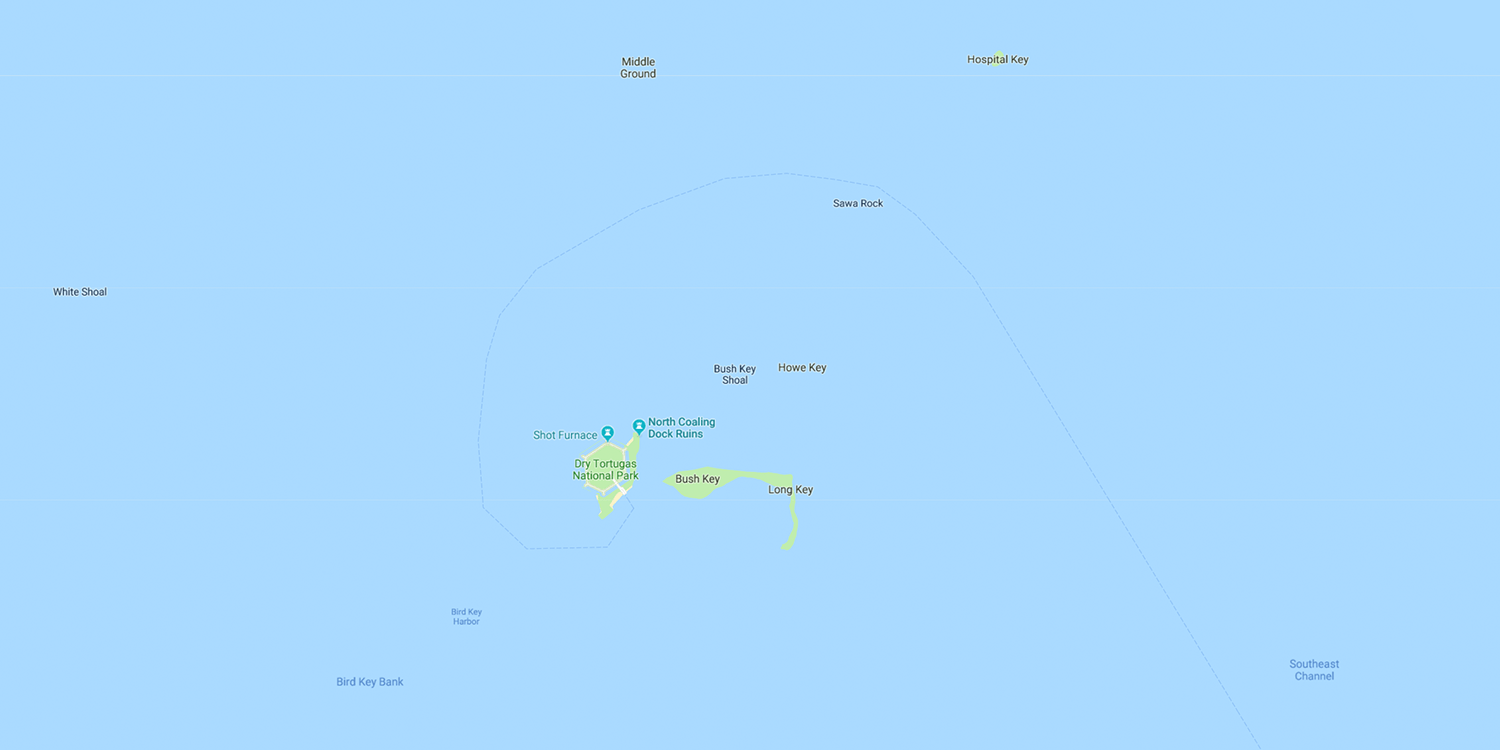
Support Dry Tortugas National Park
Make a donation, contribute with purchases, or offer your time and experience.
Get Involved